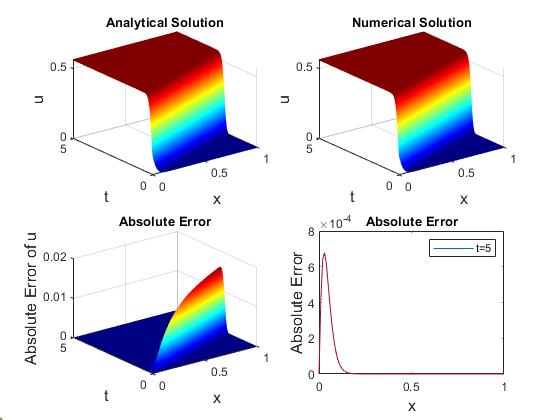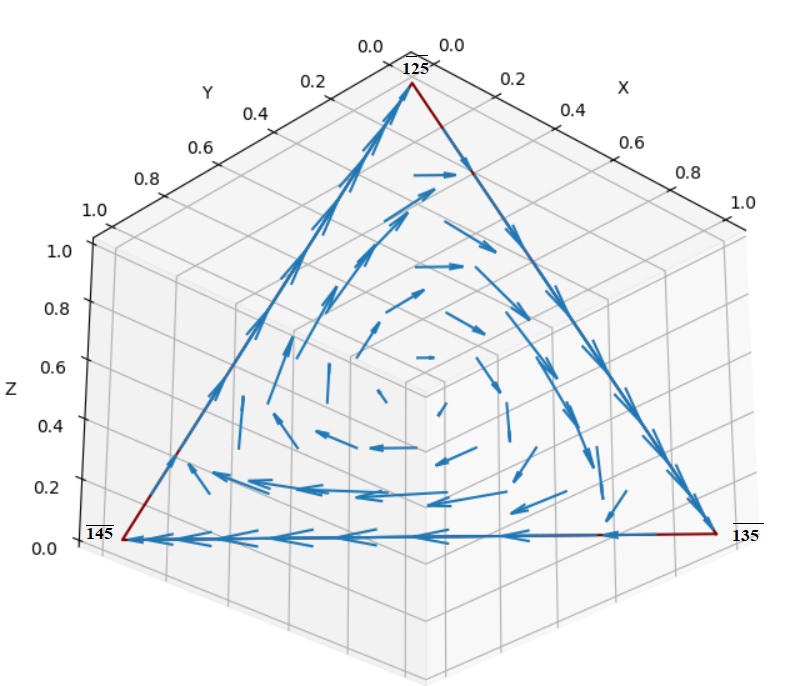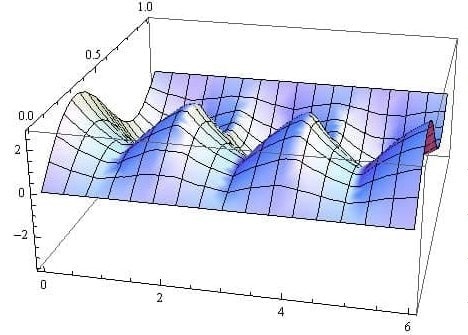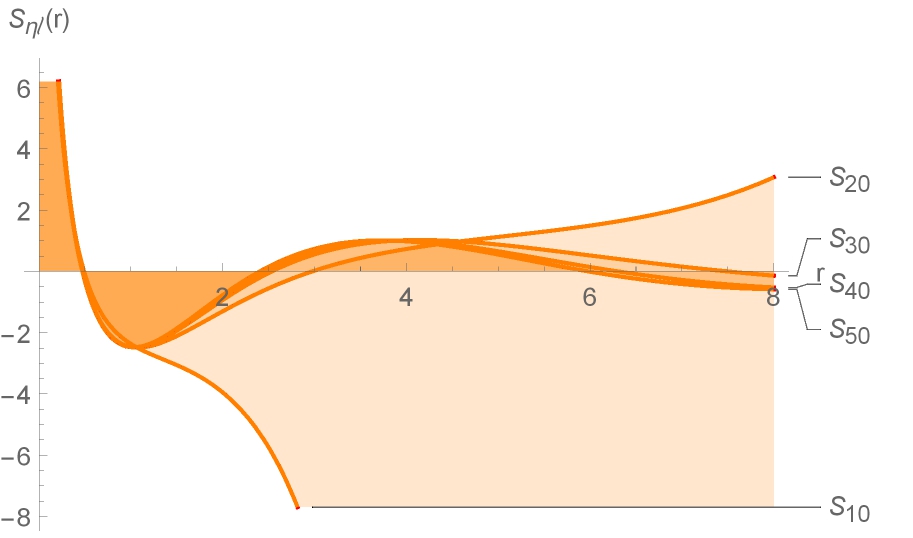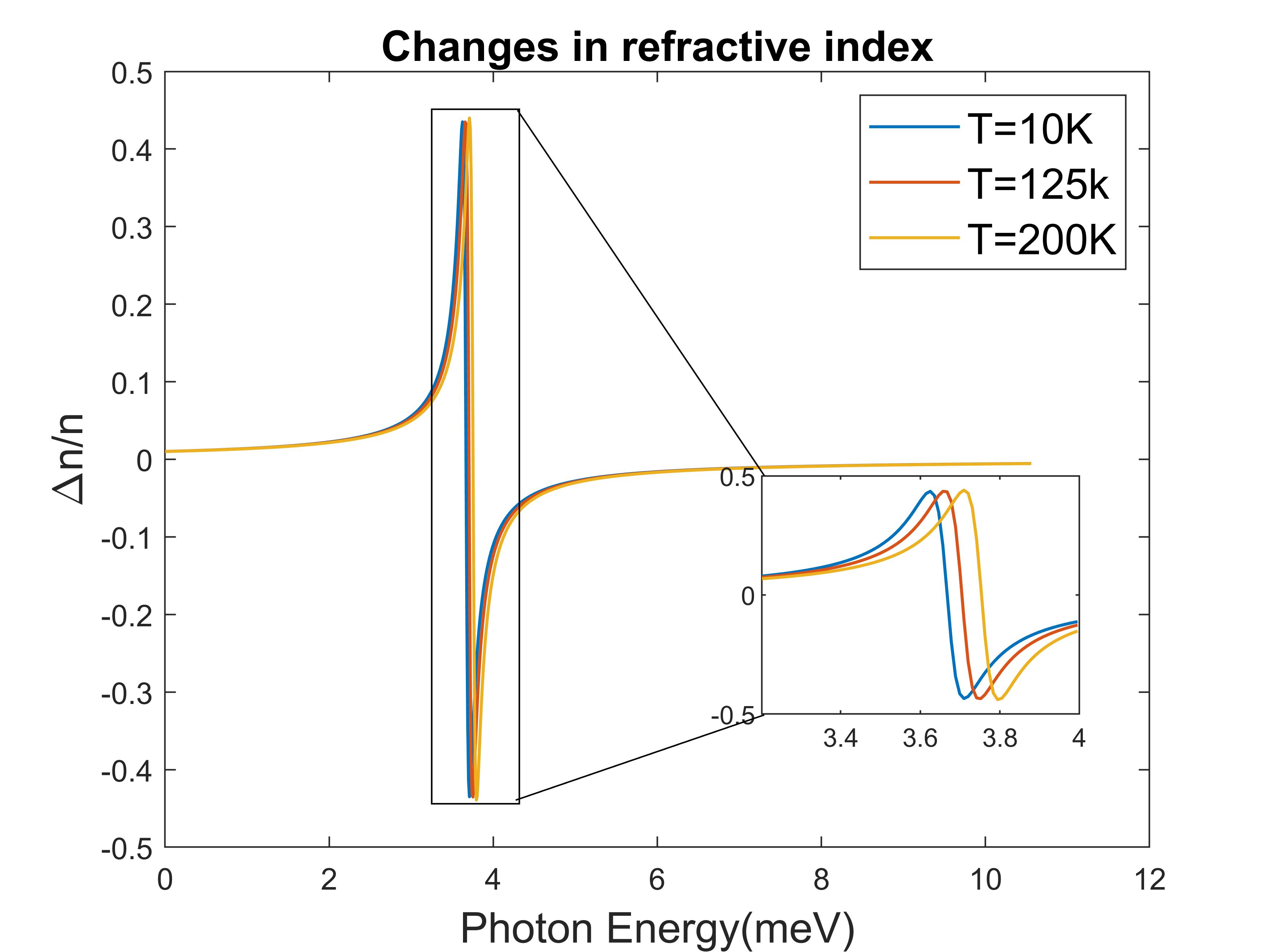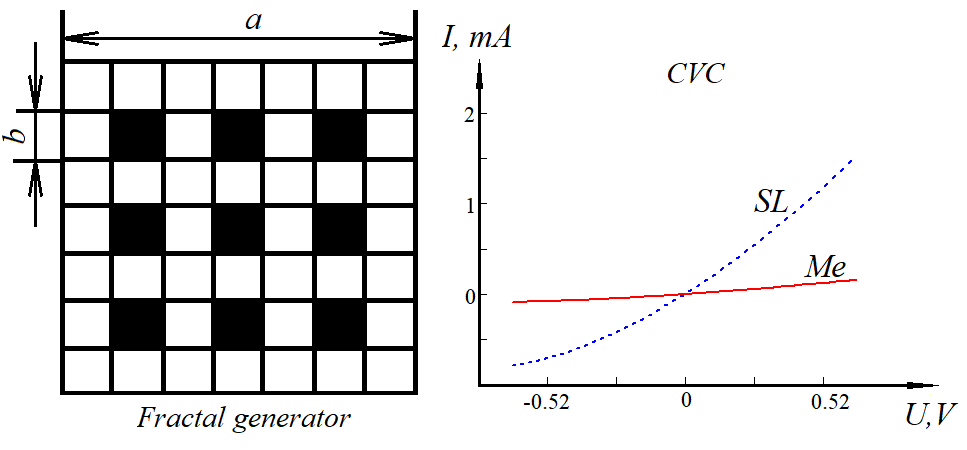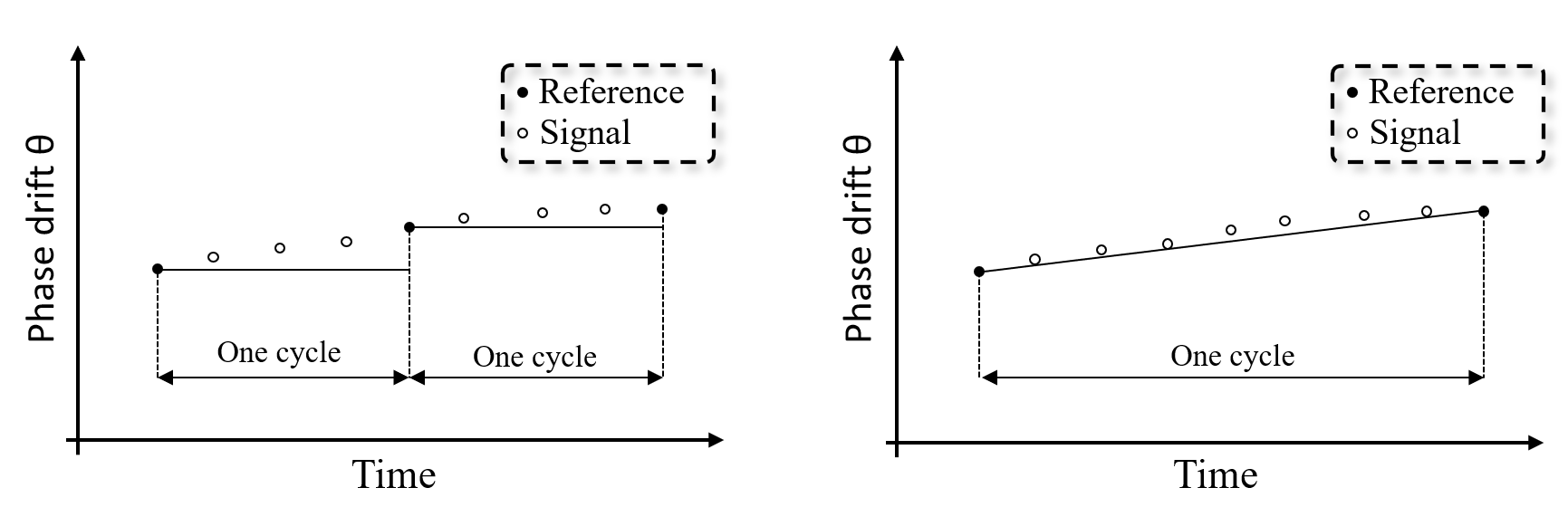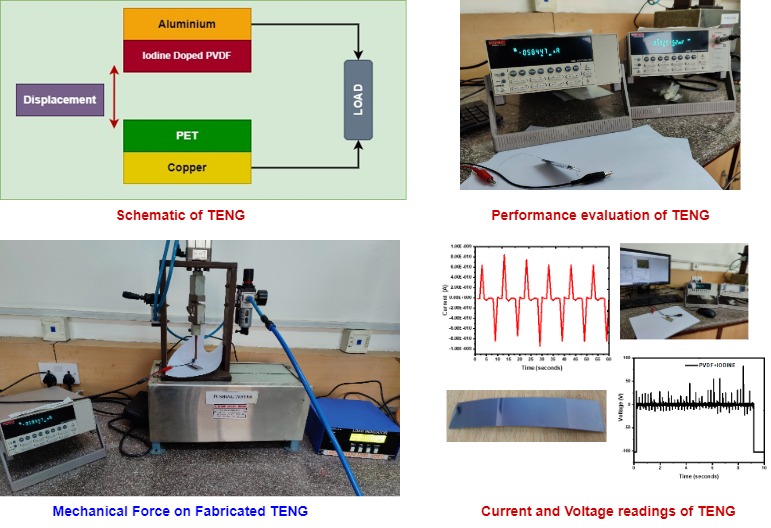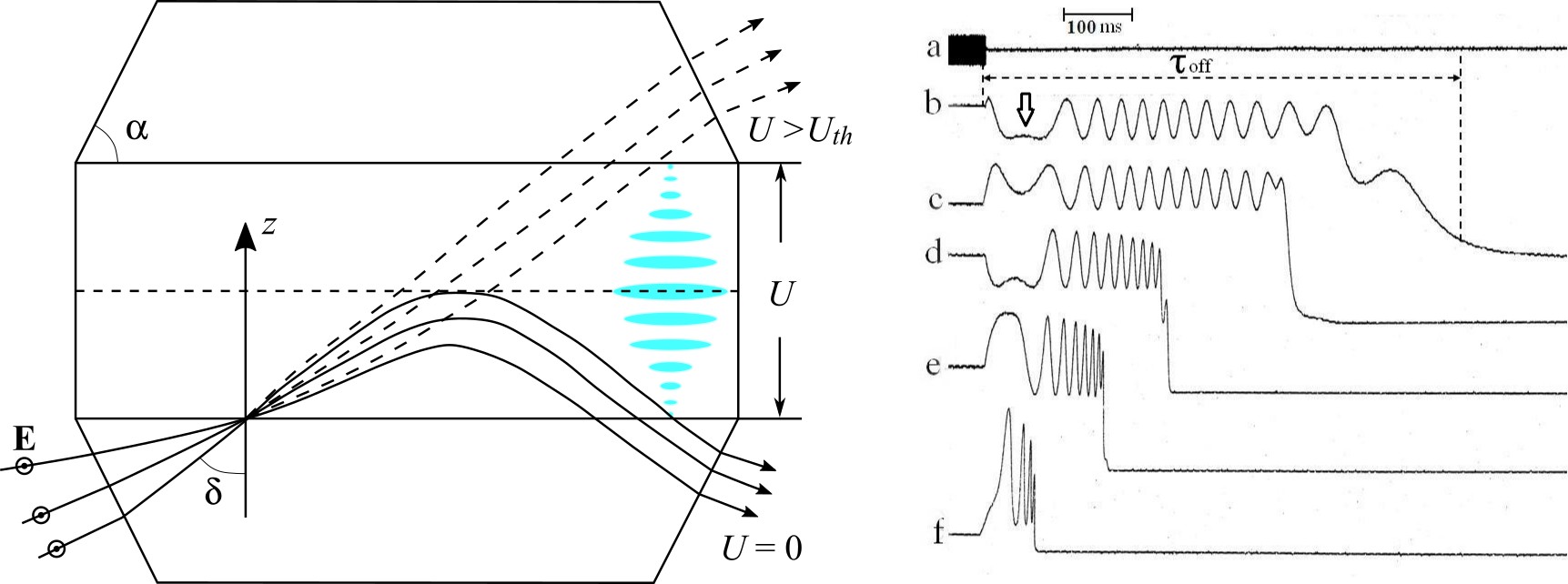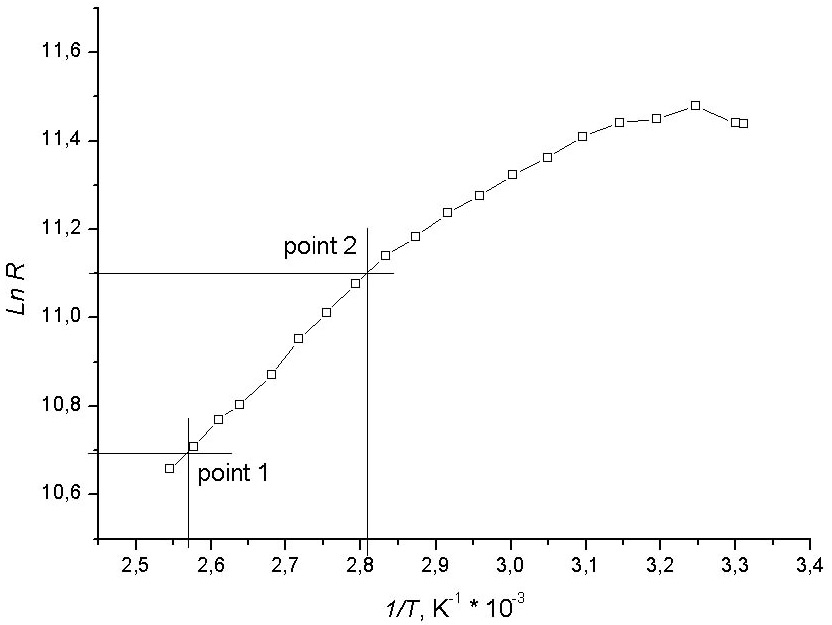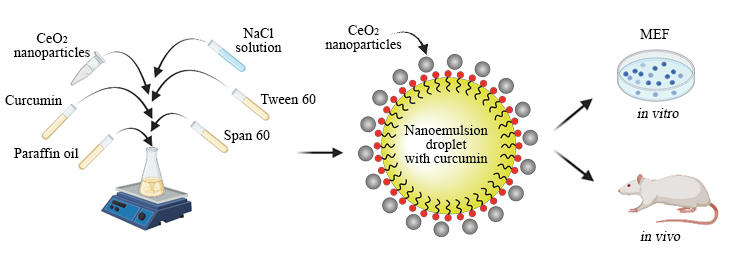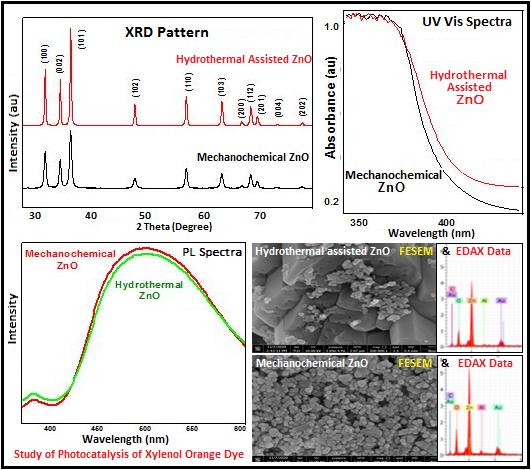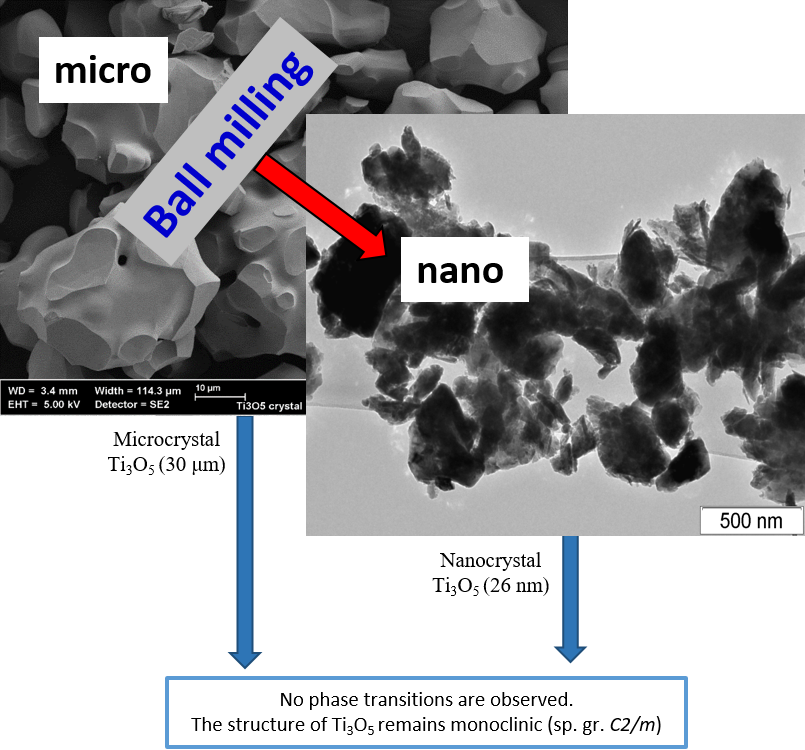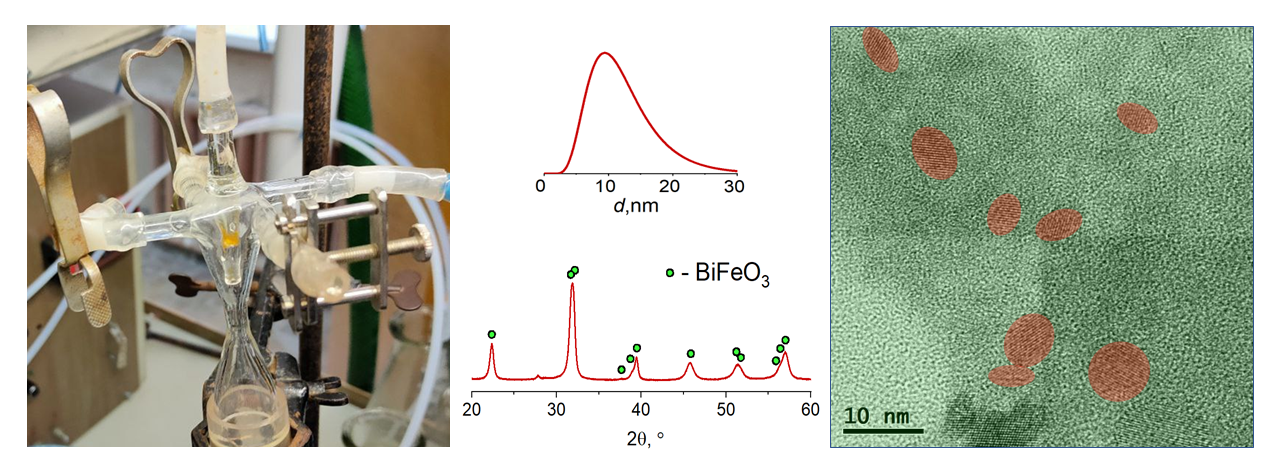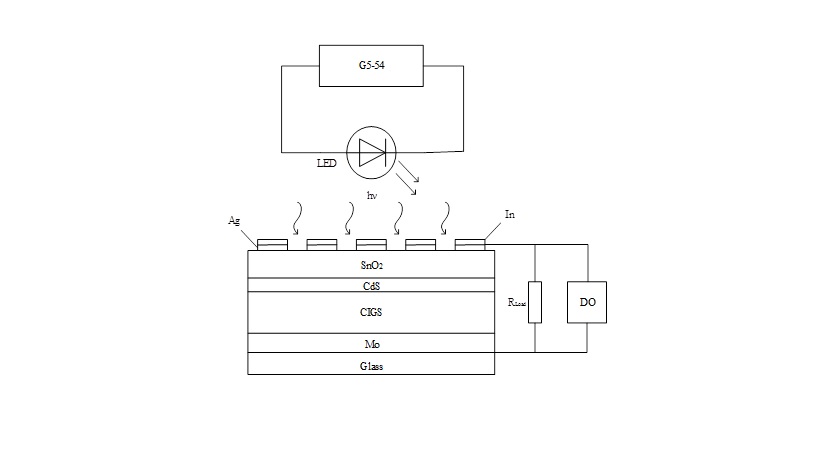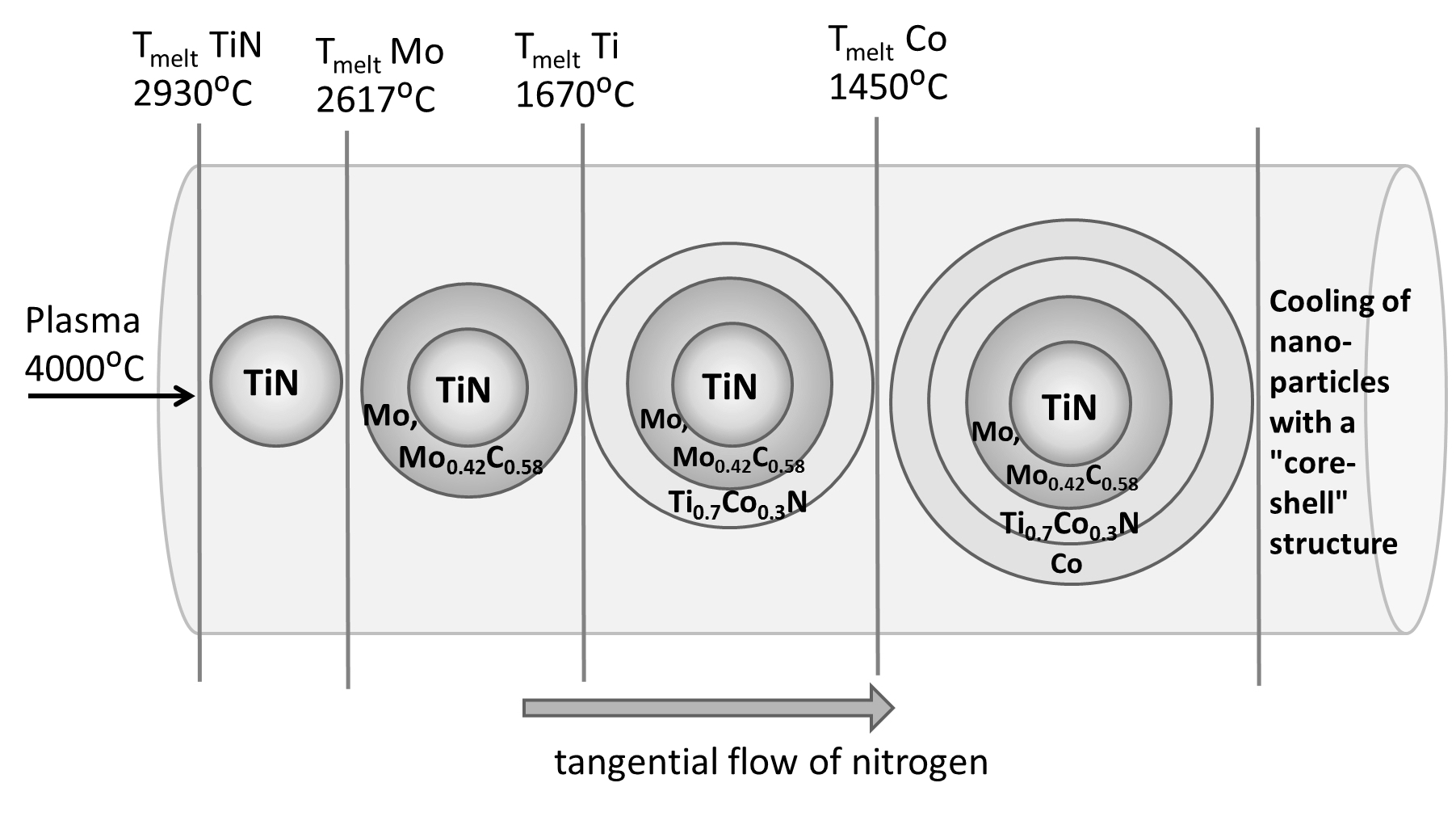MATHEMATICS
In this paper, one-dimensional lower order modified Burgers’ equation (MBE) in dusty plasmas having non-thermal ions and trapped electrons is investigated numerically by finite difference explicit method. The numerical results obtained by the finite difference explicit method for various values of the nonlinear and dissipative coefficients have been compared with the analytical solutions. The obtained numerical results are found to have good agreement with the analytical solutions. It is found that the nonlinear and dissipative coefficients have very important effect on the dust acoustic waves in the system. The absolute error between the analytical and the numerical solutions of the MBE is demonstrated. The stability condition is derived in terms of the equation parameters and the discretization using the von Neumann stability analysis. It has been observed that the waves become flatten and steeper when the dissipative coefficient decreases. It can be concluded that the finite difference explicit method is suitable and efficient method for solving the modified Burgers’ equation.
An inverse problem for a second order system of ordinary integro-differential equations with impulsive effects, mixed maxima and two redefinition vectors is investigated. A system of nonlinear functional integral equations is obtained by applying some transformations. The existence and uniqueness of the solution of the nonlinear inverse problem is reduced to the unique solvability of the system of nonlinear functional integral equations in Banach space PC ([0,T],Rn). The method of successive approximations in combination with the method of compressing mapping is used in the proof of unique solvability of the nonlinear functional integral equations. Then values of redefinition vectors are founded.
In this paper, an inversion problem for the weighted Radon transform along family of cones in threedimensional space is considered. An inversion formula for the weighted Radon transform is obtained for the case when the range is a space of infinitely smooth functions.
This study propounds a novel methodology for obtaining the explicit/closed representation of the two linearly independent solutions of a large class of second order ordinary linear differential equation with special polynomial coefficients. The proposed approach is applied for obtaining the closed forms of regular and irregular solutions of the Coulombic
This study propounds a novel methodology for obtaining the explicit/closed representation of the two linearly independent solutions of a large class of second order ordinary linear differential equation with special polynomial coefficients. The proposed approach is applied for obtaining the closed forms of regular and irregular solutions of the Coulombic Schrödinger equation for an electron experiencing the Coulomb force, and¨ examples are displayed. The methodology is totally distinguished from getting these solutions either by means of associated Laguerre polynomials or confluent hypergeometric functions. Analytically, both the regular and irregular solutions spread in their radial distributions as the system energy increases from strongly negative values to values closer to zero. The threshold and asymptotic behavior indicate that the regular solutions have an r` dependence near the origin, while the irregular solutions diverge as r−`−1. Also, the regular solutions drop exponentially in proportion to rn−1 exp(−r/n), in natural units, while the irregular solutions grow as r−n−1 exp(r/n). Knowing the closed form irregular solutions leads to study the analytic continuation of the complex energies, complex angular momentum, and solutions needed for studying bound state poles and Regge trajectories.
PHYSICS
In the present paper, investigations of nonlinear optical rectification, absorption coefficient and refractive index in a 1D GaxAl1−xAs/GaAs/GaxAl1−xAs quantum dots under a finite square well potential using simulation software such as COMSOL Multi-Physics and Matlab have been carried out in the presence of electric field, hydrostatic pressure and temperature. Results show that the resonant peaks of ORC (optical rectification coefficient) exhibit a blue shift under increasing of the electric field, while a red shift trailed by a blue shift is displayed under increasing of hydrostatic pressure and temperature. Similar trends take place for the refractive index as well as for the absorption coefficient under changing of the electric field, temperature and hydrostatic pressure. The attained theoretical results would pave a novel opportunity in designing, optimizing and applications of nonlinear opto-electronic devices by tuning the performance of the quantum dots and controlling some of their specific properties.
In this paper, we study the features of the electric current under conditions of the tunnel effect in fractal structures. Based on the electron dispersion law for fractal objects, an expression for finding the tunneling current is obtained. Current-voltage characteristics are constructed for the following contacts: fractalfractal, fractal-metal, fractal-superlattice. The influence of the fractal dimension on the characteristics of the tunneling current is revealed.
Continuous variables quantum key distribution (CV-QKD) systems are a promising direction for quantum communications. Coherent detection, which is the basis of CV-QKD, requires taking into consideration and compensating phase distortions. Phase compensation algorithms rely on using reference pulses for phase drift estimation and correcting signal quadratures. The ratio of the number of reference pulses to that of the signal ones, affects the accuracy of the phase compensation algorithm. On the other hand, it influences the secure key rate (SKR). The paper considers the effect of the reference to signal ratio on the SKR, and proposes a modification of the phase compensation algorithm, which allows using a smaller number of references at a pulse repetition frequency close to that of the system phase noise, which results in increasing SKR. We also propose a method for estimating the phase noise in the system for selection of the optimal signal to reference ratio.
Because of the rapid improvement of energy collecting technologies, unique mechanical devices have been created. As a result of the energy problems, however, researchers began to create new procedures and strategies for storing as much energy as feasible. Nanotechnology is unique, and it spurred the invention of Triboelectric Nanogenerators (TENGs), which are employed as a source of energy in wearables by transforming mechanical energy into electrical energy. This article discusses TENG, which is a triboelectric material made from Polyvinylidene fluoride (PVDF) and aluminium (Al). TENG may be made in two ways: with PVDF alone or with iodine doped PVDF, with Al staying the same in the both cases. Despite the fact that the materials are triboelectric, aluminium electrodes are utilised to attach to the materials, which are created on a plastic substrate using a thermal evaporator and taped together. The existence of PVDF was verified by the Fourier transform infrared spectroscopy (FTIR) examinations, which revealed high absorption peaks at 723 cm−1 and 849 cm−1, respectively. The digital storage oscilloscope (DSO) and pico- ammeter (10–12 m) measurements of the TENG device’s output voltage and current yielded results of 25V and 8 pA, respectively. Additionally, this study reveals the power density produced and the distinctiveness of this TENG device, both of which are critical to the efficiency and applicability of TENG in a new generation of electronics.
The features of light refraction in liquid crystal cells with a continuously changing director distribution are studied. The theoretical description is constructed within the framework of the geometrical optics approximation. The neighborhoods of the turning points are considered, where due to the variable refractive index the ray smoothly changes the direction of propagation to the opposite one. It is shown that the applied electric field changes the nature of the extraordinary ray refraction. Electrically controlled refraction of light in cells with a planar and hybrid director orientation for incident angles exceeding the angle of total internal reflection is experimentally studied. The dependencies of the turn on and turn off times of the optical response on the applied voltage and the incident angles on the glass – liquid crystal boundary are obtained.
Magnetron sputtering was used to obtain carbon films on of metal substrates of two types: titanium and tool chromium steel. The temperature dependence of the resistance of the films, which has a semiconductor character, has been studied. The current-voltage characteristics of the metal-carbon film contact were determined, which indicate the presence of the Schottky barrier junction.
CHEMISTRY AND MATERIALS SCIENCE
In this work, the physicochemical properties and biological activity of nanoemulsions prepared from paraffin oil and stabilized by nonionic surfactants as carriers of curcumin and cerium dioxide nanoparticles were studied. An analysis of the results showed that curcumin was incorporated into the oil droplets while cerium dioxide nanoparticles were adsorbed on the surface of oil droplets. The nanoemulsion droplet size did not exceed 100 nm. The absence of toxicity to mouse embryonic fibroblasts in vitro and after a single intraperitoneal injection to mice in vivo makes the nanoemulsions promising drug carriers for advanced biomedical applications.
Current work confers mechanochemical and hydrothermal syntheses of ZnO, its characterization and photocatalytic applications. Mechanochemical and hydrothermal assisted syntheses of ZnO involve two stages viz. formation of precursors followed by its calcination. The suitable calcination temperature for precursor materials to get ZnO was obtained by TG-DTA and FT-IR Spectroscopic study; XRD data of these samples specified hexagonal wurtzite crystallite structures of ZnO. FESEM photographs of mechanochemically and hydrothermally synthesize ZnO confirmed nanocrystalline hexagonal granular and stacked block-like particle morphologies respectively. EDX spectra of these samples support their elemental purity. The UV-DRS study was used to measure the optical band gap of ZnO samples. Optical properties of ZnO samples were also studied with room temperature PL spectra. Photocatalytic applications of aforementioned ZnO samples were investigated with Xylenol Orange as a model organic dye. The PCD efficiency of ZnO was estimated in terms of percent degradation reference to various operating factors.
The titanium oxide (Ti3O5) microcrystals were synthesized by using solid-phase sintering from a mixture of titanium Ti and titanium dioxide TiO2 powders. Subsequently, Ti3O5 nanocrystals were produced by using high-energy ball milling for 15 – 480 minutes. A full-profile analysis of the X-ray diffraction spectra of milled Ti3O5 powders showed that high-energy milling does not lead to disordering or changing of the structure and stoichiometry, the structure remains monoclinic (sp. gr. C2/m), and XRD reflections are broadened due to the small particle size and microdeformations. Experimental data show that increasing of the milling time leads to decreasing of the coherent scattering regions up to 26 nm, increasing of the powder volume fraction of the nanophase up to 81 %, and increasing of microdeformations value. The morphology and the surface area of milled nanopowders were examined by SEM, HRTEM and BET techniques.
Hydrothermal treatment of nanoscale amorphous ceric phosphate gel in KOH aqueous solutions was found to result in a new KCe2(PO4)3 phase. The refinement of the KCe2(PO4)3 structure showed that it was isostructural to recently reported (NH4)Ce2(PO4)3. For the KCe2(PO4)3 phase, the unit cell parameters (sp. gr. C2/c) were a = 17.3781(3) A,˚ b = 6.7287(1) A,˚ c = 7.9711(2) A,˚ β = 102.351(1) ◦, V = 910.53(4) A˚ 3, Z = 4. The thermal decomposition of KCe2(PO4)3 at 800 ◦C resulted in the mixture of crystalline CePO4 and KPO3.
The influence of the coprecipitation of bismuth and iron hydroxides in microreactors of various types on the formation of nanocrystalline bismuth orthoferrite during the heat treatment of the deposit was described. Free impinging-jets microreactor, microreactor with submerged jets, microreactor with intensively swirling flows were used. It was revealed that nanocrystalline bismuth orthoferrite with the smallest weighted average crystallite size of 12 nm is formed when a microreactor with tangentially swirling flows of reagent solutions is used for coprecipitation of hydroxides. The minimum size of BiFeO3 crystallites according to transmission electron microscopy data is determined as 3–4 nm.
The work is devoted to the study of the influence of solar radiation in the short-wave part of the absorption spectrum at different loading resistances on the lifetime (τ) of minority photogenerated charge carriers (∆n) of a thin-film solar cell based on Cu(In,Ga)Se2. It was found that with an increase in the generated photocurrent and the magnitude of the load resistance the lifetime of minority photogenerated charge carriers of a thin-film solar cell based on Cu(In,Ga)Se2 increases. The obtained experimental results are interpreted by the charge exchange of defect states, which capture the injected and photogenerated electrons, as a result of which they cease to be active recombination centers.
In this work, the possibilities of formation of nanocrystalline powders based on titanium nitride with participation of Mo and Co under conditions of plasma-chemical synthesis have been studied. Synthesis was performed according to the plasma recondensation scheme using low-temperature nitrogen plasma. All the obtained highly dispersed powders were certified by X-ray diffraction and scanning electron microscopy. The characteristics of the disperse composition of the recondensed TiN–Mo–Co products were determined by the calculation based on the pycnometric density and specific surface area data.
The possibility of formation of a “core-shell” structure was confirmed using chemical methods by etching ultraand nanodispersed powders in solutions of dilute HCl to remove the cobalt shell and concentrated hydrogen peroxide H2O2 to neutralize metallic Mo.
Based on the information about “quasi-equilibrium state” of the products of plasma-chemical synthesis in a low-temperature gas plasma, a chemical model for the formation of nanocrystalline particles is proposed.
ERRATUM
This paper is a corrigendum related to the article Vasil’ev B.V., Smyslov R.Yu., Kirilenko D.A., Bugrov A.N. Synthesis and magnetic properties of cobalt ferrite nanoparticles formed under hydro and solvothermal condition. Nanosystems: Phys. Chem. Math., 2021, 12 (4), P. 492–504, http://nanojournal.ifmo.ru/en/articles-2/volume12/12-4/chemistry/paper11/
ISSN 2305-7971 (Online)



